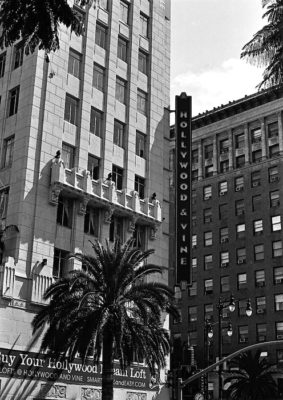Books and Places: Fitzgerald wrote of Hollywood’s allure, and despair, 80 years ago

WRITER F. Scott Fitzgerald (1921), who later died in Culver City.
Sustaining an unqualified enthusiasm for all things Hollywood can be difficult; there’s often a disturbing tension between the romance of the movies and the social forces that underpin their making and distribution.
For example, throughout this latest awards season that culminated last month with Oscar night, we were regularly reminded that Harvey Weinstein and his legal team still campaigned, not for a gold statue, but for an acquittal. So it goes.
Scott Fitzgerald once said that the ability to hold in mind two contradictory ideas simultaneously was a mark of intelligence. That may be a dubious proposition in general, but it certainly characterizes something about Fitzgerald’s attitude towards the movie business — especially if we substitute the word “feelings” for “ideas.” For he could certainly embrace the romantic allure associated with fame, money or love, and, at the same time, despair over the traps fame, money or love could become. Fitzgerald’s expectations never forestalled his disappointments. His disappointments never cancelled his expectations. He was superbly equipped to both love Hollywood and scorn it.
Pat Hobby
The love is most famously evident in “The Last Tycoon,” the novel he left unfinished when he died in Culver City. But there’s a short story he did complete from his last home in his last days that deftly explores the despairing side, the ironically titled “Fun in an Artist’s Studio.” It’s one of the Pat Hobby Stories, tales of a screenwriter past his prime, a man who scrambles for work, drink and attention. Pat Hobby fails routinely. He’s forever on the edge of destruction; as he tumbles down in story after story, he finds himself precariously on yet another edge. He never hits bottom, but the top grows more distant.
“Fun in an Artist’s Studio” is, 80 years after its original publication, the most current Pat Hobby story. For one thing, it addresses and upends male presumptions that are so much the subject of the #MeToo movement that started in “the industry.”
For another, it comments on how an iconic Los Angeles place can symbolize a destination, a dream, a crossroad, a dead end. In this story, that place is “Hollywood and Vine.”
At the artist’s studio
The story’s action is simple and the tone is woefully comic. Pat Hobby catches the eye of a socially, economically and professionally connected woman at a studio commissary. She gets him invited to a party attended by other connected types and arranges to have him sit for a portrait at her studio. Pat imagines everything that is not true. The woman doesn’t want him on the couch with her. She wants him to sit dutifully for a portrait because she sees in his face a vacant desperation born of fear and failure. Or at least that is what she saw at the commissary.
In her studio, Pat’s fantasies bring back a semblance of confidence she finds far less interesting. Only by deftly turning the tables, by exercising power Pat didn’t imagine she had, does the artist bring back the look that first caught her interest. She can finish her painting because Pat Hobby’s face again registers failure and fear. She titles the piece “Hollywood and Vine.”
Hollywood and Vine

NORTHEAST corner is the 1930 Equitable Building.
Three of the four major buildings that made up the four corners of Hollywood and Vine in 1940 (the year Fitzgerald wrote his story and the year that he died) still stand today: the Taft Building on the southeast corner completed in 1923; the Equitable Building from 1930 on the northeast; and the B. H. Dyas Building on the southwest side since 1927. The Laemmle Building (1932) stood where there is now a parking lot; it was razed in 2008 after a fire. But even by 1940, shifts in tenants, purposes, and image had begun to show. Powerful talent agencies had mostly moved out; advertising agencies had mostly moved in. There was still money and success about the area, but success inevitably defines failure. That’s a contradiction Fitzgerald understood very well.
From the ’50s on, the intersection commenced a long Pat Hobby-like slide downward; there were very dismal times through the latter part of the last century. Today, the corner’s resurgence has depended on an astute appeal to the glamour that was sought, and occasionally achieved, in Hollywood’s “golden days.” The retro-chic elements can still conjure something special. Walking the area allows one to attend to details: elegant signage, elaborate door and window frames and graceful lines upward from the street. But attending to details also means seeing harsher elements that show on the faces of street people. There is in many faces a deeper despair than even Pat Hobby registered. So the two contradictory feelings that fed Fitzgerald’s imagination still exist simultaneously in this place.
Questions recently posted on Trip Advisor suggest a preference among some people for simple, unqualified fantasies. About Hollywood and Vine, one tourist asks: “How far is it from Universal Studios?”
By Bruce Beiderwell
Category: People
